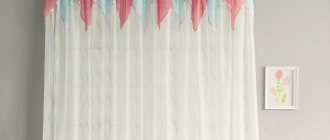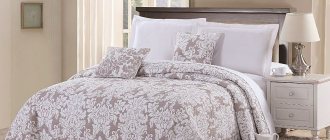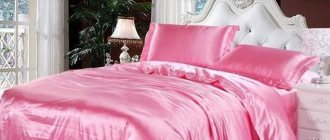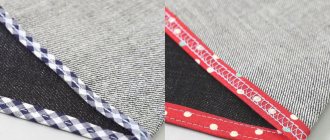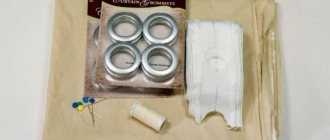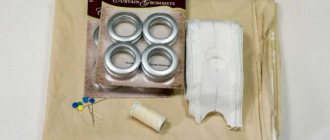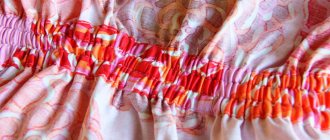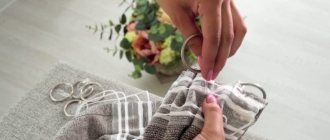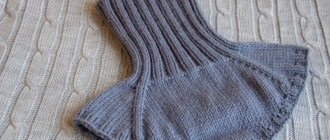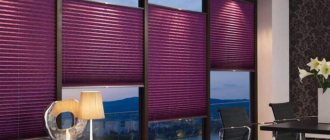What is curtain tape
Curtain tape is a braid with loops located on one side. Two cords run through the entire length of the braid. They are designed to tighten the already sewn tape. Cords allow you to form beautiful folds on curtains. At the same time, they are fixed and the curtain does not need to be arranged figuratively every time you close it.
In the photo of the curtain tape you can see that it comes in different widths and there can also be several rows of loops into which the hooks are inserted. Typically, the width of the tape is proportional to the weight of the curtain. The heavier the curtains on the curtain tape, the wider the tape must be to support the weight of the product.
The number of rows of loops allows you to adjust the height of the curtain from the floor and from the cornice. If your tape has two rows of loops, hooks can be inserted into the top one to lower the curtain and into the bottom one to raise it above the floor level.
Wide ribbons allow you to cover the hooks. If you insert them into the bottom row of loops, the pleated top of the curtains will hide the hooks and the curtain will be adjacent to the curtain rod pipe.
Curtain tape can be sewn not only along the top edge of the curtain, but also in any other place. For example, to form soft folds for decorative drapery.
In addition to the rows for attaching hooks, there may be a Velcro strip at the bottom of the tape. It is designed to be attached to tulle curtains. The tulle is glued to the Velcro and then there is no need to sew a separate tape on it and order a cornice with two pipes. Both layers of textile are attached to one classic cornice.
Curtain braid - 50 interior design options:
PreviousCurtainsCurtain options for kindergarten: for the music room and play group
Next
CurtainsReview of combined curtains: how to sew curtains from two fabrics, diagrams
Types of assemblies
In addition to the classic “accordion”, hanging curtains can form a wide variety of folds. Depending on the placement of the cords, there are the following folds:
- "Pencil". Narrow triangle folds are formed on the curtain, turning into wide rectangles, similar in shape to pencils;
- “One-sided”, when all the folds are laid in one direction;
- “Two-sided”, when the folds of up to half of the curtain are directed in one direction, and the second half is turned first towards;
- “Butterflies” are wide rhombuses diverging to the sides;
- "Glasses." Each fold is shaped like an hourglass;
- "Cases." Wide rectangular folds of equal width are formed on the curtain;
- "Bud". The fold shape is similar to the "Glass" but the bottom part tapers. It turns out to be a flower on a stalk;
- "French". The folds form the letter "X";
Before hemming curtains with tape, find out the gathering factor of the selected tape. It can be from 1.5 to 3. This indicator is indicated on the packaging of the tape. You need to multiply the width of the cornice by this factor to buy curtains of the required width.
Fringe for a formal occasion
Curtains made from high-quality textiles can radically change the interior of a room. They add notes of solemnity and presentability to the design, elevating even the simplest furnishings of the room. Fringe is a decorative element that greatly enhances the visual appeal of the window design.
There is a variety of fringe on the market, differing in the material of manufacture, size, color and the use of additional accessories. It is not difficult to choose the appropriate decor for any curtains - from light curtains made of silk and satin, to curtains made of dense fabrics - jacquard, velvet.
Among the interiors in which fringed curtains are appropriate, we highlight the following stylistic trends:
- Victorian style;
- Classic;
- Modern;
- Baroque;
- Provence;
- Empire style
In interiors decorated in modern styles - minimalism, fusion, hi-tech, loft, fringe on the curtains looks alien, since their philosophy does not imply an emphasis on the solemnity of the atmosphere.
Photos of curtain tapes
How to sew and tighten curtain tape
The curtain braid is sewn on after processing the edges of the curtain. To do this, you need to turn the edges to the wrong side and stitch into the edge. The top edge is also folded to the wrong side - the width of the tape or a little more. If the hem is wider than the braid, its edge must first be processed using an overlocker so that it does not fray later.
Then you should check the length of the curtain again. It must correspond to all measurements, taking into account the allowance for processing the top.
The upper edge needs to be ironed and the braid should be applied to the front side of the curtain so that the distance from the edge is 1-2 cm. If the margin for the top of the curtain is taken into account, the distance from the edge should be 4 cm. Usually, when planning to cover the top of the curtain with a lambrequin in the future, leave a margin of 1 cm, and if a lambrequin is not provided, a margin of 4 cm is also made.
The edge of the curtain tape is sewn off. The braid turns over to the wrong side of the curtain. Next, you need to stitch the product so that the new line follows the previously made line. If you plan to create a scallop on the fabric that will cover the hooks on the cornice, it needs to be formed at this stage. To do this, the curtain tape must be pulled back from the top edge of the curtain by 0.5-1 cm. The comb is included in the preliminary calculations of the fabric, for which its estimated height is multiplied by 2.
When sewing braid onto curtains, the second line is placed along the bottom edge. If your sewing machine does not have an upper differential (so-called non-stop sewing), the fabric must be pulled a little at the speed of the machine when sewing on the curtain tape. In this case, the seam will not be pulled together. Then the curtain needs to be ironed and the braid gathered to the desired width.
After sewing the curtain tape to the curtain, the fittings need to be pulled together. Typically, curtain tape has at least 3 cords for tightening. The cords are pulled not from one, but simultaneously from both edges of the braid. For convenience, this can be done together with an assistant, who should hold one edge of the braid, while the other edge is gradually pulled together. You can get out of the situation even when there is no assistant, for example, fix one end of the braid by throwing it over the door handle.
At the moment of tightening, the braid should be tightened, trying to prevent the curtain from sagging. With one hand you need to hold the knotted laces, and with the other, move the fabric from the edge to the middle. If the folds stop moving, they must be moved to the fixed edge of the braid.
As the braid gathers into folds, the cords become longer. For convenience, they are wound on cardboard or on special plastic clips, which are sold in fabric stores. After securing the curtain to the curtain rod, the fasteners should be hung behind the curtain, secured in a loop on the braid.
When the braid is completely tightened, it must be measured again with a measuring tape and adjusted to the required width of the curtain, and the gathers should be evenly distributed and the coil of cords secured. Many seamstresses cut off the excess cords, but we should not forget that some types of fabric are recommended to be washed, dried and ironed flat. Therefore, cords can still be useful.
